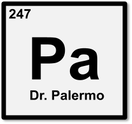After a few months on using model based instruction in my class, I am pleased with the progress of my students. They have communicated to me that they have a deeper understanding of the content after they construct their models. They have also noted that they can visualize the models in their head during assessments. What I have seen for some is that building models helps them make sense of what they are learning and lead to a greater occurance of conceptual change. I have also shifted towards a phenomenological based approach to learning to align with NYSLYSS and NGSS. While I have yet to see any significant statistical difference on student outcomes (exam scores) I have seen an improvement on higher order constructed response questions. My thoughts are that until the Regents assessment changes to align with the NYSLYSS framework, the benefit of this type of instruction will not become clear as the current exam assess the outcomes of science not the process of doing science.
|
|
AuthorI currently teach Regents level chemistry to 10th grade students utilizing flipped/blended instruction and the 5E approach to learning. Archives
October 2017
Categories |

 RSS Feed
RSS Feed




